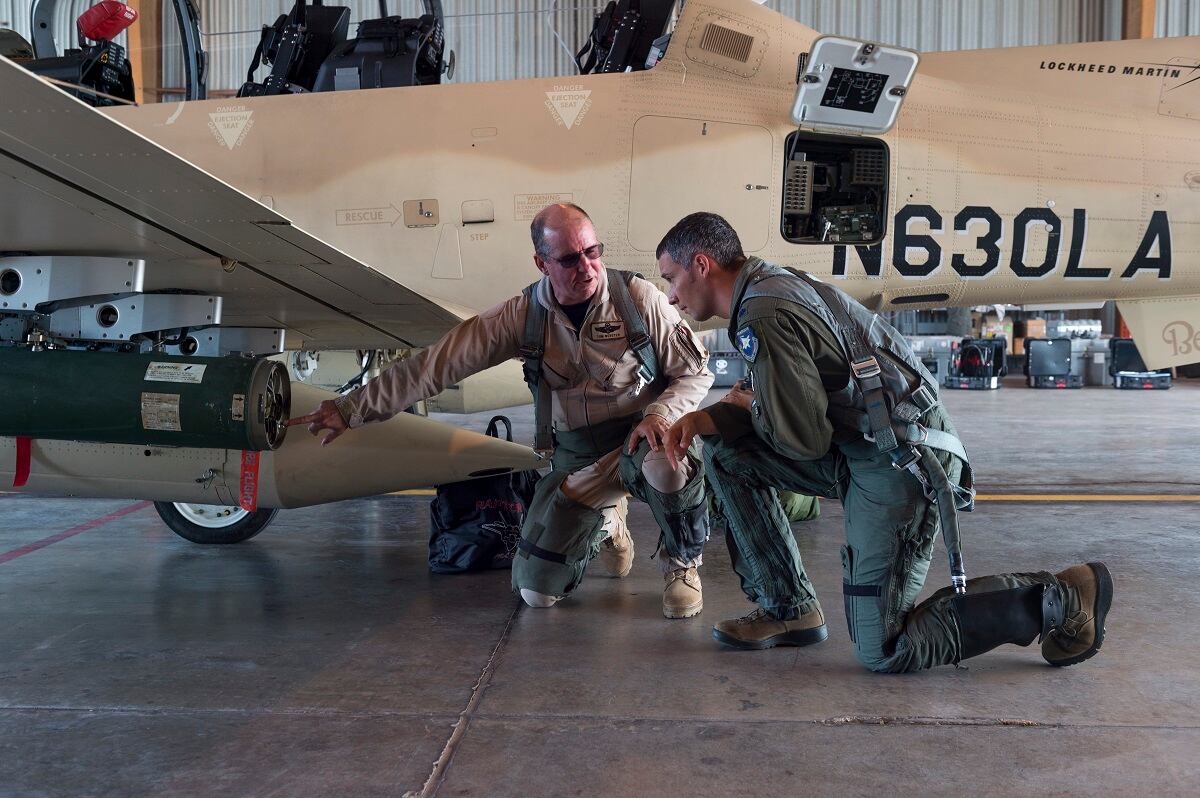WASHINGTON — Just days after the tragic death of a pilot involved in the Air Force’s light attack experiment, the service is deliberating how — and whether — to proceed with the effort.
Lt. Christopher Carey Short, a naval aviator, died June 22 when the A-29 Super Tucano he was flying crashed over the Red Rio Bombing Range, which is part of the White Sands Missile Range north of Holloman Air Force Base in New Mexico. The second pilot operating the aircraft was airlifted to a hospital with minor injuries.
Since then, all light attack aircraft flying operations have been suspended as the Air Force begins an investigation into the cause of the crash and determines what to do next, said Gen. Mike Holmes, commander of Air Combat Command.
“I can’t really say much about the accident, because there’s an accident board — a safety board that’s stood up, and we use safety privilege to protect the people that were involved there,” he told reporters at a June 28 breakfast.
“We’re proud of the whole team that are down there flying in the exercise,” Holmes said. “We’re certainly very sad about the loss of Lt. Chris Short, a great aviator that was dedicated to trying to find out what the answers were about [whether] we can use this airplane in some circumstances to free up out more sophisticated fighters. We’ll let that safety board work through that mission and report back to us.”
The Air Force is experimenting with a handful of inexpensive, off-the-shelf turboprop aircraft to determine whether to establish a program of record. Rather than using expensive fourth- or fifth-generation fighters, officials posit that it could buy light attack aircraft to accomplish the counterterrorism missions flown throughout the Middle East at a lower cost.
The service decided to conduct a second round of experiments to get more information about what it would take to support and sustain two aircraft the service is interested in purchasing — Textron’s AT-6 and the A-29 built by Sierra Nevada Corp. and Embraer.
Since May, one A-29 and two AT-6s have been flying out of Holloman Air Force Base — regularly flying three times daily — as U.S. military pilots fly training missions, do weapons drops, and familiarize themselves with the performance of the aircraft.
A previous round of experiments, conducted last August, involved the A-29, AT-6, Textron’s Scorpion and L3 Technologies’ AT-802L Longsword.
Air Force Materiel Command and the service’s acquisition wing — led by the Strategic Development Planning and Experimentation Office — are working through whether the service has enough data on the A-29 and AT-6 to end the experiment, whether more testing is needed, and how that data could be required if needed.
The Air Force does not have any initial information on what may have caused the crash, Holmes said. But once it a better idea, it can take precautions as necessary if flights resume, even before the final Safety Investigation Board or Accident Investigation Board reports are released.
RELATED

The death of a test pilot has — understandably — cast a pall over the experiment, which had previously been celebrated by Air Force officials as evidence of the service becoming more agile, innovative and willing to adopt nontraditional acquisition mechanisms.
But Holmes said he was not concerned that the tragic event would have “undue impact” on whether the experiment moves forward, or whether the service tries similar efforts in the future.
“I don’t think it will have a chilling effect on future experiments,” he said. “Whenever you’re trying something new, there are risks of trying something new and working through it, and without knowing exactly what happened, and certainly without trying to insinuate exactly what happened — aviation’s not necessarily risky, but it’s unforgiving.”
“I think we’ll take a look at the data we’ve gathered, [and] we’ll continue ahead with our process toward deciding whether we want to go forward with the program.”
It appears that there continues to be support in Congress for the program. Earlier this week, the Senate Appropriations defense subcommittee moved forward a spending bill that would add $300 million for a light attack aircraft program, allowing the Air Force to start a program in fiscal year 2019.
Valerie Insinna is Defense News' air warfare reporter. She previously worked the Navy/congressional beats for Defense Daily, which followed almost three years as a staff writer for National Defense Magazine. Prior to that, she worked as an editorial assistant for the Tokyo Shimbun’s Washington bureau.








